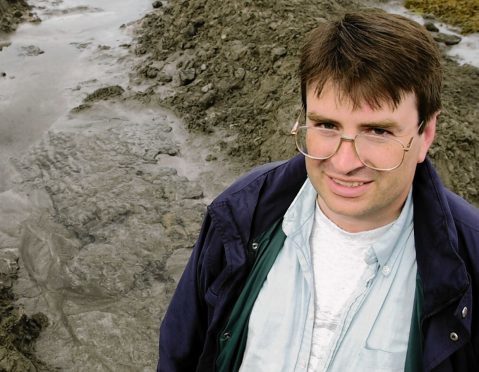Police are hunting a man believed to have committed a monstrous crime – by targeting a prehistoric treasure on Skye.
And community leaders fear that the damage to rare, 165million-year-old dinosaur footprints, in an area branded “Scotland’s Jurassic Park,” could destroy a priceless tourist attraction.
Responding through a wonder of 21st century technology, police on the island have tweeted: “Unfortunately, we can confirm we’re investigating reported damage to the dinosaur footprints at Staffin yesterday (Wednesday). Were you in the area?”
They added: “It would appear a male driving a campervan was possibly responsible for pouring plaster into two of the prints. Any info, please call 101.”
Numerous species of dinosaur roamed Skye when what is now Scotland was attached to North America and Greenland.
The evidence has proved a winner with visitors, drawing countless tourists from home and abroad – some travelling specifically to Skye to see and photograph the footprints.
Local councillors are disgusted by the apparent crime.
Former police officer Ian Renwick said: “The discovery has brought a lot of people to the island – it’s rare and important. Any damage that’s been done is very sad.
“If it was a case of someone taking a plaster cast you’d have thought someone locally would know about it, but it doesn’t sound like just a plaster cast.”
His ward colleague Drew Millar, the council’s education chairman, said: “It’s absolutely shocking that someone would go to such lengths to destroy something that’s been around for such a long time.
“This is one of the major tourist atractions on Skye – some of the oldest proof of dinosaurs in this part of the world.”
Colleague Hamish Fraser said: “I don’t think there are many prints around the country as clear as these. It’s unthinkable why anyone would do this, in a remote area. Their motive must be pretty sick.”
Fossil tracks were found at Staffin in 2002. Experts made casts of the footprints to preserve copies, knowing they would ultimately be eroded by the tide.
Some were kept at Staffin Museum. Others went to the Hunterian Museum in Glasgow and the National Museum of Scotland in Edinburgh.
Two years later, what were thought to be the smallest dinosaur footprints yet discovered went on show in Scotland for the first time.
The three-toed prints of a coelophysis were smaller than a 5p coin – and inside a larger print of another dinosaur.
